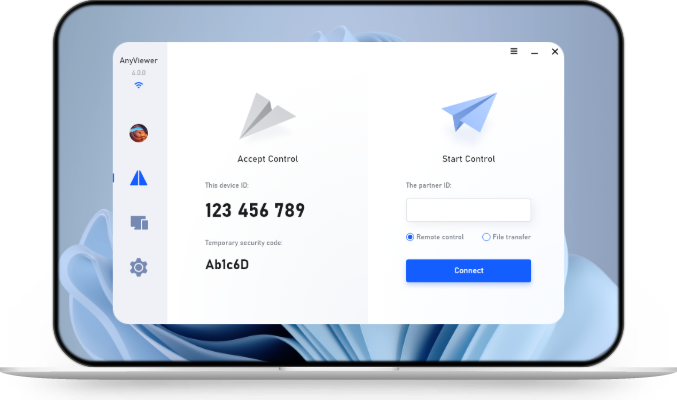Fixed: Access to Remote Server Is Denied Because No Login-Mapping Exists
Delve into the intricacies of server access denial. This guide provides insights, troubleshooting tips, and real-life experiences to empower users facing login-mapping issues.
Introduction
Navigating the complexities of server access can be daunting, especially when confronted with the error message "Access to remote server is denied because no login-mapping exists." In this comprehensive guide, we delve into the intricacies surrounding this issue. From understanding the root cause to practical solutions, empower yourself to overcome server access hurdles with confidence.
Decoding the Error Message
Embark on a journey to decipher the cryptic message that disrupts your server access. Uncover the meaning behind "Access to remote server is denied because no login-mapping exists," and gain clarity on the initial steps to resolve it.
- Access Denial
The message straightforwardly communicates that your attempt to access the remote server has been denied. This denial is the result of a specific issue in the authentication process.
- No Login-Mapping Exists
The core of the matter lies in the absence of login-mapping. In simpler terms, the system is unable to establish a connection between your login credentials and the corresponding permissions required to access the server.
Significance of Login-Mapping in Server Access
Login-mapping serves as the bridge between user authentication and server access. It ensures that the system can verify the user's identity and grant access to the appropriate resources. Without proper login-mapping, the system struggles to validate the user, leading to the denial message.
Common Scenarios Leading to Login-Mapping Issues
Identify the common scenarios that lead to login-mapping issues, hindering your path to seamless server access. From misconfigurations to user authentication challenges, unravel the intricacies of these scenarios.
- Misconfigurations
The server configurations may have errors or inconsistencies, preventing the establishment of proper login-mapping.
-
Authentication Issues
User authentication details might not align with the system's records, causing a failure in the login-mapping process.
Troubleshooting Techniques for Login-Mapping Errors
Equip yourself with practical troubleshooting techniques to tackle login-mapping errors head-on. This section provides actionable steps and expert tips to resolve issues and restore smooth server access.
Best Practices for Secure Login-Mapping Setup
Dive into a comprehensive guide on establishing a secure login-mapping setup. Learn best practices that not only prevent login-mapping errors but also enhance the overall security of your server access infrastructure.
Review Server Configurations
Begin by thoroughly examining the configurations of the remote server. Ensure that the user attempting access is correctly defined in the system.
User Authentication Check
Verify the user's authentication details, such as username and password. Confirm that the provided credentials match the registered information in the system.
Login-Mapping Settings
Dive into the login-mapping settings. Check for any misconfigurations or discrepancies that might be causing the denial of access. Ensure that the system recognizes the user's credentials.
Impact on Workflow and Productivity
Examine the repercussions of "Access to remote server is denied because no login-mapping exists" on your workflow and productivity. Gain insights into how efficiently resolving this issue can positively impact your daily operations.
Disruption to Workflow
- Downtime
The immediate effect of denied server access is downtime. Tasks dependent on server resources come to a halt, causing disruptions in ongoing projects.
- Communication Breakdown
Collaborative projects often rely on real-time communication and shared resources. Denied access hampers this communication flow, hindering team collaboration.
- Project Delays
As workflow interruptions accumulate, project timelines are at risk of being pushed back. This delay can have cascading effects on deadlines and deliverables.
Decreased Productivity
- Task Backlog
With the inability to access necessary files or tools, tasks start piling up. This backlog can overwhelm teams and hinder their ability to meet targets.
- Employee Frustration
Denied server access can lead to frustration among team members. The inability to perform tasks efficiently can impact morale and motivation.
- Missed Opportunities
In a fast-paced work environment, missed opportunities can result from delayed responses or inability to access critical information promptly.
Future Trends in Server Access Security
Stay ahead of the curve by delving into emerging trends in server access security. Understand how advancements in technology are shaping the landscape and discover proactive measures to secure your server access.
Biometric Authentication Integration
In the coming years, we anticipate a widespread integration of biometric authentication methods for server access. Technologies such as fingerprint recognition, facial scans, and iris scans are becoming more sophisticated, offering a secure and user-friendly alternative to traditional password-based authentication.
Advanced Encryption Protocols
The future holds advancements in encryption protocols to fortify the security of server access. As cyber threats become more sophisticated, implementing advanced encryption algorithms becomes imperative. This ensures that data transmitted between users and servers remains confidential and protected.
Zero Trust Security Models
Moving away from the traditional perimeter-based security approach, the future of server access security leans towards Zero Trust models. This approach emphasizes strict verification of every user and device attempting to access the server, regardless of their location. It minimizes trust assumptions and enhances overall security.
Multi-Factor Authentication (MFA) Evolution
Multi-factor authentication is evolving beyond the conventional two-factor methods. The future will witness the incorporation of behavioral biometrics, device recognition, and contextual factors for a more dynamic and adaptive MFA approach. This ensures heightened security against unauthorized access.
FAQs
- What causes the error message "Access to remote server is denied because no login-mapping exists"?
When server access is denied due to a lack of login-mapping, it often stems from misconfigurations or authentication issues. Addressing these issues is key to resolving the error.
- How can I troubleshoot login-mapping errors?
Start by reviewing your server configurations and ensuring proper user authentication. Check for any misconfigurations in login-mapping settings and follow step-by-step troubleshooting techniques outlined in this guide.
- Are there preventive measures to avoid login-mapping issues?
Establishing secure login-mapping practices is crucial. Regularly audit and update your login-mapping settings, implement multi-factor authentication, and stay informed about security best practices.
- Can login-mapping issues affect my overall workflow?
Absolutely. Denied server access can disrupt your workflow, leading to downtime and decreased productivity. Resolving login-mapping issues promptly is essential to maintaining seamless operations.
- Share a success story of overcoming server access challenges.
Read about individuals who successfully navigated server access hurdles in the "Real-Life Experiences" section. Gain valuable insights and inspiration from their journeys.
- What future trends should I be aware of in server access security?
Stay informed about emerging trends in server access security, such as biometric authentication and advanced encryption protocols. Adopting these trends proactively enhances the overall security of your server access.
Conclusion
Empower yourself with the knowledge to conquer the complexities of "Access to remote server is denied because no login-mapping exists." Armed with insights, practical solutions, and real-life experiences, you're ready to navigate the server access landscape with confidence.

